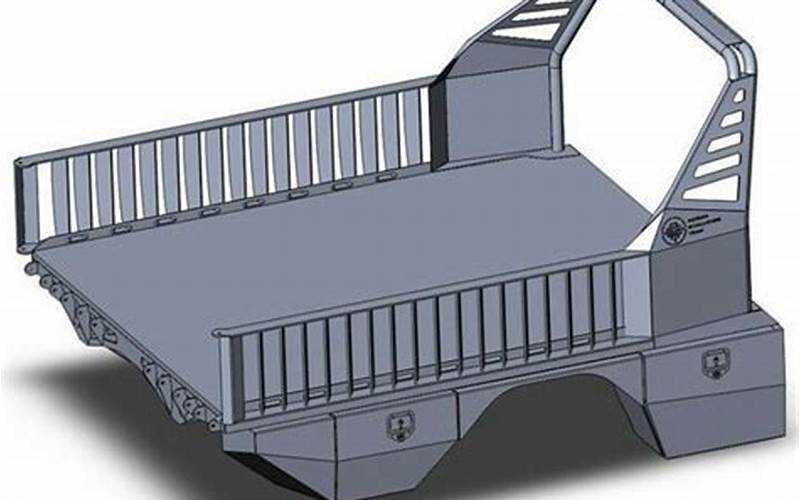
 Source: bing.com
Source: bing.com
Greetings, Vehicle Owner! Are you tired of the limitations of a standard truck bed? Do you yearn for a versatile and customizable solution that can cater to your specific needs? Look no further than building your own flatbed! In this article, we will delve into the world of flatbed construction, exploring its strengths, weaknesses, and everything in between. So grab your tools and let’s get started on this exciting journey!
The Introduction: Unleashing the Potential of a Custom Flatbed
Before we dive into the nitty-gritty details, let’s take a moment to understand the essence of a flatbed. A flatbed is essentially an open platform that replaces the traditional enclosed truck bed. By opting to build your own flatbed, you gain the freedom to design a hauling solution that perfectly aligns with your requirements.







The Strengths and Weaknesses of Build Your Own Flatbed
Like any other endeavor, building your own flatbed has its strengths and weaknesses. Let’s explore these factors in detail:
Strengths:







Weaknesses:







Table: Complete Information about Build Your Own Flatbed
| Component | Description |
|---|---|
| Frame | Durable steel frame providing structural support for the flatbed. |
| Flooring | Various options available, including wood, metal, or composite materials. |
| Sides and Rails | Vertical panels and rails that enclose the flatbed and secure the cargo. |
| Hitch Receiver | A mechanism for attaching trailers or other towing accessories. |
| Lighting | Properly installed lights for enhanced visibility and safety. |
| Toolboxes | Storage compartments for tools, equipment, and other essentials. |
| Tie-Downs | Various anchor points and tie-downs to secure the cargo during transportation. |
Frequently Asked Questions (FAQs)
1. What materials are commonly used to build a flatbed?
Wood, steel, and aluminum are popular choices for constructing flatbeds, each with its own advantages and considerations.
2. Can I build a flatbed for any type of truck?
While the process may vary depending on the truck model, it is generally possible to build a flatbed for most trucks.
3. How long does it take to build a flatbed?
The construction time depends on various factors, such as complexity, size, and individual skill level. It can range from a few days to several weeks.
4. Do I need professional assistance to build a flatbed?
If you have adequate experience and skills in carpentry or metalwork, you can build a flatbed on your own. However, seeking professional assistance is recommended if you lack the necessary expertise.
5. Are there legal regulations for custom flatbeds?
Yes, different jurisdictions have specific regulations regarding the construction and usage of custom flatbeds. It is essential to comply with these regulations to avoid legal complications.
6. Can I add additional features to my custom flatbed?
Absolutely! Custom flatbeds offer the flexibility to incorporate additional features such as toolboxes, ramps, winches, or even hydraulics, depending on your requirements.
7. How do I ensure proper weight distribution on my flatbed?
Proper weight distribution is crucial for stability during transportation. Consult weight distribution guidelines or seek professional advice to ensure your flatbed is designed accordingly.
8. What maintenance is required for a custom flatbed?
Regular cleaning, inspections, and maintenance of components such as lights, tie-downs, and flooring are necessary to ensure optimal performance and longevity.
9. Can I remove a custom flatbed and revert to a standard truck bed?
While it is technically possible, reverting to a standard truck bed can be a complex and time-consuming process. It’s important to carefully consider this decision before building a custom flatbed.
10. How can a custom flatbed enhance my hauling capabilities?
A custom flatbed allows you to design a hauling solution tailored to your specific needs, enabling you to transport a wide range of items efficiently and securely.
11. Are there any drawbacks to building my own flatbed?
Building your own flatbed requires time, skill, and an initial investment. Additionally, it may limit the potential market for your vehicle when you decide to sell it.
12. Can I paint or customize the appearance of my flatbed?
Absolutely! You can paint, add decals, or customize your flatbed’s appearance to match your style and preferences.
13. Are there any safety precautions I should consider when building a flatbed?
Wearing appropriate safety gear, using proper tools, and following construction guidelines are essential for a safe and successful flatbed building process.
Conclusion: Take the Wheel and Build Your Dream Flatbed!
In conclusion, building your own flatbed offers a plethora of advantages, from enhanced versatility and customization options to cost-effectiveness and personal satisfaction. Despite the challenges and considerations, the rewards far outweigh the drawbacks. So, unleash your creativity, gather your tools, and embark on this exciting journey to build a flatbed that perfectly suits your needs.
Remember, a custom flatbed is not just a practical hauling solution but also a testament to your craftsmanship and individuality. Embrace the opportunity to create something truly unique and functional. Take the wheel and build your dream flatbed today!
Disclaimer: The information provided in this article is for educational purposes only. Always consult local regulations and seek professional advice before embarking on any construction project.
 MyVans Your Vehicle Solution
MyVans Your Vehicle Solution